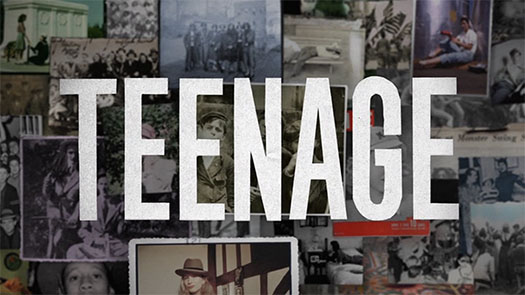
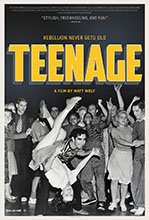 BUY FROM AMAZON: CLICK HERE!
BUY FROM AMAZON: CLICK HERE!
MSRP $34.99
RATED NR
STUDIO Oscilloscope Laboratories
RUNNING TIME 77 minutes
SPECIAL FEATURES
• Dreaming Documentary: Making Teenage
• On Set with the Bright Young People
• Additional Archival Footage
• Trailer
The Pitch
You cannot contain my angst! I will express it through the power of SWING!!
The Humans
Matt Wolf, Jon Savage, Ben Whishaw, Jena Malone
The Nutshell
A hypnotic rumination on the genesis of youth culture, Teenage is a living collage of rare archival material, filmed portraits, and diary entries read by Jena Malone, Ben Whishaw, and others.
The Lowdown
Any singular film is a near miracle; a myriad of disparate elements collected and eventually arranged by meticulous people with machines. If a film comes together, it’s always cause for celebration, but some of these meticulous people don’t get the celebration they deserve. One of these people is the editor. A bad edit means a bad movie, but that also means an editor wields tremendous power: the power to take something awful and shape it into something spectacular. But when an editor is given heaps of obscure and damaged archival footage and asked to turn them into a cohesive narrative, that’s the kind of task that could be a dream job or a total nightmare.
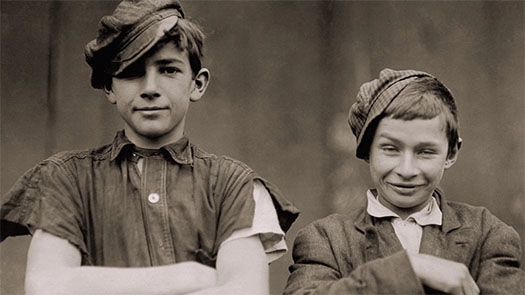
The camera always loved Cousin Cletus.
I don’t know if editor Joe Beshenkovsky enjoyed tackling this immense task for Teenage, but I also don’t really care. He did a hell of a job, either way. Teenage is an engaging, kinetic, and briskly paced documentary, and much of its quality comes from a truly superb edit. Culled from archival footage and beautifully realized “recreations” shot by director Matt Wolf, the film achieves a fluidity and warmth you won’t find in Ken Burns’ documentaries. Images are cut together in ways that propel, shock, and titillate, like a jump cut from a trembling, spasming young soldier to a dancing flapper, or when footage of jitterbugs raising their hands in celebration is followed by footage of young Germans with their hands raised in Nazi salutes. This creates an illusion of narrative parallels, something the film uses to its full advantage. We are being told a story, and while there’s enough historical information to feel educational, this is really about the story of adolescence in the twentieth century.
The verbal portion of the story is told to us through the monologues of several young characters, including an English teen (voiced by Ben Whishaw), a girl in the Hitler youth, a black American boy swept up in the swing movement, and an American girl (voiced by Jena Malone). Several of these characters aren’t characters at all: the German girl is Melita Maschmann, who wrote a memoir about her years in the Hitler youth. What isn’t clear is if the voiceover used in Teenage is totally fabricated by Matt Wolf and/or author Jon Savage (upon whose book the film is based) or if it’s adapted from Maschmann’s memoir. These characters are established fully by the fifteen-minute mark, after a bit of history (the fall of child labor and the associated repercussions) is out of the way. Then, we start to see Wolf’s “recreated” footage.
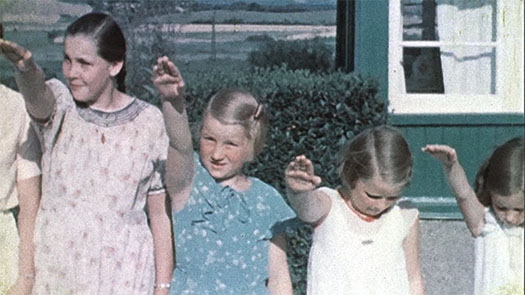
The stuff of nightmares.
The recreated footage is beautiful, and while it’s easily distinguishable from the archival footage, it still works very well when intercut with the archival stuff. Some of the recreations were shot on Super 8, some on 16 mm with a vintage Bolex. The prints were then run through projectors over and over again to create analog artifacts like dirt and scratches. This hand-crafted approach to the aesthetic pays off: it washes away any feeling of cheapness, and bestows the recreations with an air of authenticity. I sometimes take issue with the fetishization of analog formats, but it’s hard to argue with results. The stuff just looks great. What doesn’t work about the recreations is that the staging, shooting style, and acting feel a bit too modern in some segments. The sharp divide between the archival footage and the recreations exists in how normal, everyday people react to the camera. In the early days of handheld film cameras, there was a natural camera-shyness in people. You can plainly see it in the archival footage, but the recreations betray that shyness. These actors are members of the selfie generation. It doesn’t fully break the illusion, but the performers act coquettishly with the camera in a way that doesn’t feel authentic. I’m aware that this is an extreme nitpick, especially when most documentary “reenactments” are hot garbage, but I think the authenticity could have been pushed just a bit further, giving us an intangible sense of truth.
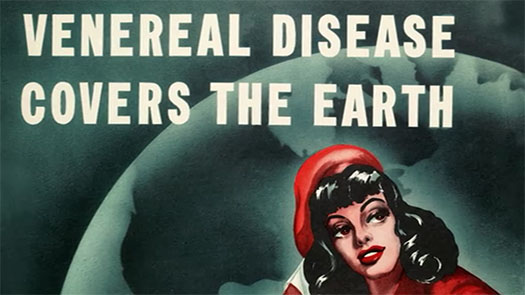
AND IT’S ALL HER FAULT!
These recreations (while a little off) are unique and fun, the voiceovers are never too expository, and the archival footage is beautifully restored. The music (composed by Bradford Cox) acts as the antithesis of the cheesy muzak and stuffy period-appropriate stuff you’re used to hearing in documentaries about the first half of the twentieth century. In summary, Teenage succeeds mightily. It’s slight for a documentary, and only runs a brief seventy-seven minutes, but the film constructs a strong narrative through-line and focuses sharply on adolescent culture, despite the topic being somewhat fuzzy and nebulous. Despite the stellar voiceover cast, Joe Beshenkovsky’s editing is the star of the film, highlighting the importance of an oft-forgotten and invisible art. Teenage demonstrates the power in the arrangement of images, and shows that cinema can dazzle you or break your heart with a single jump cut. Teenage is easy to recommend, easy to see (it’s on Netflix Instant in the US), and rewarding to watch, so go watch it.
The Package
The quality of the video varies greatly because the footage comes from a gazillion different sources, but everything looks faded, dirty, and scratchy in the right ways. I didn’t spot any egregious digital artifacts, so I’d call this transfer more than adequate. The audio is great: Bradford Cox’s music is mixed wonderfully and the voiceovers sound crisp and smooth. The disc’s extras aren’t much, but the commentary from director Matt Wolf and producer Kyle Martin is excellent. The on-set footage is interesting to watch, because it gives a fly-on-the-wall look at the production of the recreated footage. There’s also an informative sixteen minute making-of featurette, additional archival footage for the history nerds, and a trailer you could’ve just looked up on YouTube.
Rating: 




Out of a Possible 5 Stars